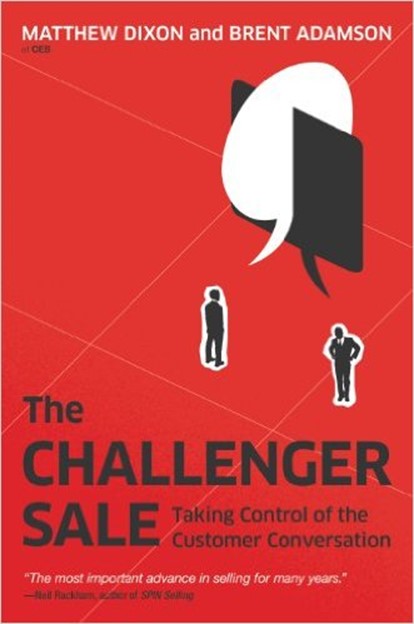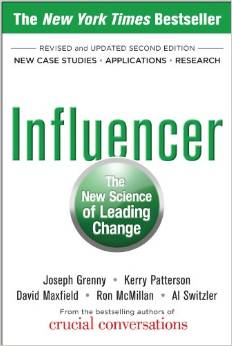Robert Bogue
November 30, 2015
No Comments
Do you have influence? Most of us want to believe that we wield influence like a machete that can cut a path through the jungle striking a bush or tree in our path and having it instantly fall out of our way but most of us who have tried to wield this weapon have been disappointed. We have left a wake of poorly adopted changes that are unwelcome proof that there’s opportunity for improvement when it comes to leveraging our influence. Influencer seeks to help us to understand how to successfully influence change and what we might have done wrong in our failed attempts to influence others to change.
Six Sources of Influence
Key to Influencer is the idea that there are six powerful sources of influence that most of us don’t use in the right proportions or at the right time. As we’ve influenced other’s we’ve leaned heavily on one or two of the six sources and it’s because we’re not leveraging them all together that we’re not as effective as we can be. The six sources of influence are:
|
Motivation |
Ability |
| Personal |
Personal Motivation |
Personal Ability |
| Social |
Social Motivation |
Social Ability |
| Structural |
Structural Motivation |
Structural Ability |
As you can see they break down into two dimensions. The first dimension around motivation and ability and the second dimension about the scale – whether personal, social, or structural.
The motivational categories are relatively straight forward in that they’re seeking to provide the energy for the system – the drive to change things. The other side, categorized as ability, is really about preventing barriers and providing resources. It’s about how you change the dynamics of the situation so that they’re easier. If motivation is the gas pedal in the car, ability is releasing the emergency brake.
The Reality of Change
As I mentioned in The Heart of Change and Leading Change, even those like John Kotter struggle to make organizational change work consistently. The failure rate on organizational change projects is appalling. There are so many forces inside the organization designed to resist change it’s very difficult to get change accomplished. (See The Fifth Discipline and Thinking in Systems for more about the factors in an organization that resist change.) So while there’s a culture that is talking about how the world is changing faster now than it ever has – we’re just as resistant – if not more resistant to change than we’ve ever been. There are so many change initiatives and programs that it’s hard to pick the ones to look at much less decide which approach is right for your organization.
The result is that we’ve got a reality where we need to have adaptability and to be able to change our organizations but it’s more likely that we’ll try and fail. We’ll further entrench the cynicism that has already taken hold of most of the members of the organizations that we work for.
Fuzzy Objectives
Perhaps the most powerful speech ever given in the history of mankind was when John F. Kennedy laid out the plans to safely transport a man to the moon and back as a part of a special message to congress on May 25, 1961. Specifically he said “I believe that this nation should commit itself to achieving the goal, before this decade is out, of landing a man on the moon and returning him safely to earth.” His goal was quite specific in the objective and in the timeframe. It was a crystalizing vision that was specific and engaged the emotions of a nation which believed they were losing the space race to the Russians. However, most of the objectives that we see inside of an organization aren’t so clear.
Improving morale is certainly a worthwhile endeavor but without any sort of metric or clear timeline it’s still fuzzy. What’s more it’s not clear to most folks how to actually change that. While we may not personally know how to build a rocket we know that there are people who do who were tasked with getting us to the moon and back. However, most people don’t know how to improve morale or who we would go get to do that work.
There are lots of ways to improve morale. The Romans pacified the masses by bread and circuses. You can improve moral by having a Christmas party or a summer picnic. However, these are short term solutions to the challenge of improving morale. When we’re looking for morale improvement are we looking for a lasting change in the perception – or are we simply looking to change the number to hit our latest set of management objectives?
By clearly articulating our goals we can set on a course to achieve them. If the goals can’t be clearly articulated then there is little hope of reaching them.
Measuring Change
As Edward Deming noted, “You get what you measure.” This is both a good thing and a bad thing. On the good side if you measure the right things for change you can accomplish the change. On the bad side if you measure the wrong thing, you’ll get that too. The beauty of measurement is that by planning measurements you’ll develop a better understanding of the objective that you want to accomplish and in that you’ll automatically tighten the objective itself.
One of my “Nine Keys to SharePoint Success” is planning measurement. That is you have to plan how you’re going to measure change to be successful. Often people and organizations don’t put enough effort into designing the metrics. We look for simple process measures which indicates we’ve completed the process or we look for the results that we’re hoping for, but rarely do we look for creative metrics that are somewhere between the behaviors we’re asking for and the results we’re hoping for. They are a blend of both leading and lagging indicators.
Leading vs. Lagging indicators
Anyone who has ever tried to lose or manage their weight knows that the ultimate end judge of success is the scale. There’s no other measure that stands up to the number on the scale. However, there’s nothing you can do – directly – to change the number on the scale. From a systems point of view (See Thinking in Systems) our weight is largely a matter of the additional stores that we’ve put on by way of fat. In order to influence the amount of fat that we have stored in our bodies we have to burn more energy than we take in. We can control how much energy we expend by exercising or making small changes such as walking up the stairs. We can change the amount and type of food we take in to control the number of calories that we’re getting. There are other factors like our metabolic rate that influences our total calorie burn but really by managing the number of calories we take in and the number we put out through various forms of movement we control our weight.
So the leading indicators for success in managing our weight may be the number of calories that we’re taking in – as most weight management programs focus on. In fact most of those programs are focused on making the problem simpler so we can actually achieve our goal of taking in less calories. Tools like Fitbit and other fitness bands track our relative activity level. Together these metrics help us to predict what will happen on the scale.
There are many things that you can measure like the number of pushups that you do or the amount of fat that you take in. These may help you assess what will happen on the scale, but they’re not the best predictors. These leading metrics can impact the end result – the lagging indicator – we’re looking for but only when all other variables are the same. If we pick these metrics we’ll likely be disappointed as our leading metrics don’t lead to the results we’re looking for. A good leading indicator reasonably predicts the outcome of the lagging indicator (result) that we’re looking for.
As it turns out figuring out what the right metric for an initiative is – well, it’s difficult.
Right Metrics
Metrics are necessarily a simplification of success. They measure just a part of the equation. The end result doesn’t measure sustainability. Returning to Kennedy’s call to go to the moon, we know from the book Lost Knowledge that we’ve forgotten how we got there. If the objective was to get to the moon we’ve accomplished the goal but more often the goals are layered and we really wanted to build the capacity to get to the moon. A one-time program is a good start but sustainability tends to be much more important in business.
Norton and Kaplan created the concept of a balanced scorecard in 2005. The idea is that you wouldn’t look at a single indicator to determine the health of a system. Instead you would look at a set of metrics that together gave you a picture of how the organization or initiative was working. Instead of deciding whether to look at the lagging indicators for which there was little direct control or leading indicators that might impact the real goal but aren’t necessarily directly correlated, you could look at both. In fact, they encouraged a look at a small set of metrics that together created a sketch of how things were operating.
Knowing that you don’t have to get everything into a single metric makes it easier to pick metrics – but it doesn’t instruct you as to how to pick metrics. Here are a few of my tips:
- The overall goal – If it’s getting to the moon it’s binary and insufficient but it’s the first starting place for the metrics. In cases where you’re looking for a particular sales goal, the goal can be much more useful.
- The prerequisites – In our moon example we needed to have a rocket design that had sufficient thrust to escape the gravity of the Earth. The rocket capacity might be one of the metrics that you would track.
- Leading Behaviors – Behaviors which you believe are tied to the goal are good metrics. The key here is ensuring that the leading behavior really does drive the result.
Storm the Castle
One of the characteristics of an influencer is their ability to over-determine their success. (This goes by other names in other contexts.) The heart of this idea is that influencers don’t leave important variables to chance. If there’s a question about whether there’s enough internal marketing for an idea, they’ll lobby for additional messaging. If they’re concerned about the outcome of an important decision they’ll plot out a plan for all the possible outcomes so they’re ready to respond when they’re informed of the results of the decision.
If they’re looking for a connection to a person or organization, they’ll look for multiple connections from different angles to ensure that their linchpin connection doesn’t fail. Influencers know that failure isn’t an option – it’s a certainty. It’s just a matter of time and preparation. The more preparation you put in the longer it will be until the failure – and quite often the lower the impact will be.
Influencers aren’t afraid to overdo it when the component is essential to their objective.
Something Wicked This Way Comes
How do you get normal people to behave as monsters? It turns out that it isn’t hard. It seems like we’ve all got monsters inside of us who aren’t limited by our rational thinking. Consider the research by Stanley Milgram which discovered that 65 percent of research subjects were willing to administer seemingly lethal shocks to another person when they couldn’t see the other person. More troubling is that when he introduced an accomplice who was willing to do seemingly lethal shocks to an unknown and unseen accomplice, the percentage of people who would administer seemingly lethal electrical shocks stood at 90%. So in answering the question of how folks could be complicit in the extermination and genocide of Jews during World War II we found the monster – and we are he. Also, when an accomplice refused to issue the shocks only 10% of the research subjects would administer the shocks.
Humans have a fundamental attribution error which leads us to believe our poor choices are based on circumstances and others poor choices are based on their character (See Crucial Conversations, The Advantage, Switch, and Beyond Boundaries for more.) We explain away our weaknesses and vilify others. What Milgram’s research shows is that we are the villain – at least 90% of us are. The way that we can truly influence the world we live in is the way that Milgram accomplished it – by demonstrating to someone that they have a choice. That they can say no. The more that we can make the normal behavior the one that we want the easier it will get.
Social Norms
It turns out that we’re not so driven by our rational minds as we would like to believe. In fact we’re not as driven by our emotional considerations as we would like to believe. The rider (reason) and the elephant (emotion) are often blindly walking down the path of the social norm. (See Switch and The Happiness Hypothesis for more on the model of the Rider, Elephant, and Path and how it works.) In Thinking, Fast and Slow we learned that our unconscious processing (System 1) often makes judgements that it passes along to our conscious processing (System 2) that our conscious mind doesn’t question. So even when we are able to think about something we may not be able to question the social norms in which we live. (See also Incognito which talks about the unconscious being aware before our consciousness is.)
This is the second, social, and third, structural, portions of the motivation framework. It’s the social aspects that drive social norms and the structural components that drive the social norms – much like how calculus is able to tell you the slope of a line at a given point, structural influence drives social influence.
Personal Motivation
We’ve all been through some sort of a motivational event. Perhaps it’s not an event where at the end it seems like everyone would sign up for a six month mission to the Congo but there are definitely times when we feel like we’re sold on an idea. If you’ve ever been to a time share event you’ve experienced the psychological warfare that is designed to get you to buy into a time share – and it’s effective. However, personal motivation created in those ways don’t last. It doesn’t take long for us to realize that it’s an illusion.
To create personal motivation there are four tactics that you can use:
- Allow for Choice – You can’t expect to motivate people to an activity if they don’t have a choice. If they can’t say no then they won’t say yes. (See Choice Theory for more)
- Create Direct Experiences – Make it real for them by engaging them in what they’re going to be doing. The more real you can make it – and the more the person can feel it the more they’re likely to want it.
- Tell Meaningful Stories – Sometimes you can’t involve people in the solution directly, sometimes the only answer is to give them a vicarious experience through an emotionally engaging story.
- Make it a Game – A lot has been made of gamification these days but it’s more than badges and achievements. Making something a game is creating the balance between ability and challenge that is essential for flow. (See Flow, Finding Flow, and The Rise of Superman)
The reason we need to create personal motivation lies in the marshmallow experiments of Walter Mischel. Children who were able to delay gratification were much more likely to succeed in life. (See How Children Succeed, Introducing Psychology of Success, and The Information Diet for Walter Mischel’s famous test.) As Steven Wright says “Hard work pays off in the future. Laziness pays off now.” By teaching the skills necessary to delay gratification we’re able to improve the possibility that we’re going to accomplish our goals – both personally and organizationally.
In truth most of the challenges that we have with folks when it comes to motivating them isn’t the fact that they have some moral or character defect. Instead the issue is simply moral slumber. That is that they don’t realize the problems that their behavior is causing. It’s not that they are callus and don’t care for others. It’s that in the moment, in what they’re doing, they aren’t realizing their impact on others.
Personal Ability
If I were to tell you that right this very second there’s an asteroid barreling down on the Earth and it’s quite likely to end all life on the planet I won’t motivate you. I’ll create deep emotions of dread and anxiety perhaps but I won’t motivate action. The reason for this is simple. You can’t do anything about an asteroid barreling down on the planet. It’s unlikely you know anyone who could do anything about this. You would be motivated to change the outcome but intensely frustrated that you have no power to change it.
When we work on personal motivation and we create a burning desire in someone to make a difference but make no effort to create a belief in the person that they are up to the task of achieving the goal that the motivation is aimed at, we create frustration. So the other side of the coin from motivation is creating ability – or at least the perception of ability.
Often times the object of the motivation can feel overwhelming. How can you solve starvation in Africa is an immense goal. You can’t possibly solve that by yourself. However, what you may be able to do is save one child, one family, or one village from starvation. By narrowing the focus of the motivation into something achievable we create the perception of personal ability.
There are, however, other ways of creating the belief of personal ability necessary to drive someone forward. It can be a framework “proven” to be successful on the kinds of problems that you’re interested in. It might be training on new skills that you can use to get closer to or work on the chosen motivation. It could be – as it often is for me – reading a book and trying to understand the insights that it offers so I can unwrap one more layer of the mysteries about why organizations rarely change.
For me, increasing personal ability is at the heart of lifelong learning as well as flow. (See The Rise of Superman, Flow, and Finding Flow for more on flow). Improving personal ability is about a willingness –if not a hunger – for learning and the application of continual challenges to continue to drive improvement – often through flow.
Social Motivation
Perhaps one of the most telling examples of how people motivate others is the work of Everett Rogers as described in his book Diffusion of Innovations. Rogers explains how innovations – particularly farming innovations – disperse through the community. He identified five factors that lead to adoption but also how the cosmopolitan tendencies in people made them more motivated to adopt a change – and in turn how this would help to motivate the peer groups which they operated in.
While Brene Brown may caution against shaming (See Daring Greatly), social shaming is a powerful force and it can be a powerful force for good. Consider what happens when you report to a household their energy consumption – almost nothing – as compared with what happens when you show a household how inefficient their consumption of energy is when compared to their neighbors. The resulting social shaming causes even the most hedonistic and unconcerned home owner to start to consider their energy usage.
Social Ability
Have you ever wondered how Weight Watchers works? I don’t mean how the point systems works. I mean how the program works. How is it that you can get together a set of folks who all struggle with their weight and the end result is that they – for the most part – lose weight? The answer lies in the social connectivity that is built. Weight Watchers groups are designed to support and reinforce the successes that people are having and to support those that are struggling. It seems like a simple thing but it works.
Similarly how did two drunks create Alcoholics Anonymous, a twelve-step movement, and a path for “sanity” in the lives of otherwise broken people? The aspects of acceptance and support help motivate alcoholics to not drink. (See How to Be an Adult in Relationships for more about acceptance.)
This is at the heart of social ability – leveraging the support and acceptance of others to motivate us to do better.
Structural Motivation
Any organization is perfectly designed to get the results you’re getting. If you want to change the results you’re getting – change the organization. In systems thinking (see Thinking in Systems) our goal is to find the best leverage point on the system to effect change. This is quite often to change the equation. When you change the reward systems you change how everything works making it easier to create the social and personal motivators that you need. All too often folks reach for these big levers and hope that the downstream influences will just line up correctly. Politicians set policy and law and hope that they’ll get the results they want. However, often what they’re looking for doesn’t happen.
As was discussed in Dialogue Mapping and The Heretic’s Guide to Best Practices, there are some systems so complex that they become wicked problems where you can’t predict the outcome when you change the system. Instead, you have to accept that what you’re doing may have different – and sometimes opposite consequences. Drive describes how sometimes providing extrinsic motivations sometimes destroys or reverses intrinsic motivations. So on the one hand, the big lever in the system is changing the game so that there’s a new set of motivations. On the other hand, using the lever may not have the reaction that you’re looking for. The Law of Unintended Consequences (discussed in my review of Diffusion of Innovations) guarantees that there will be some unintended consequences of every change you make – those intended consequences may be a big deal – or they may be trivial. Consider for a moment the experiment to tame the Red Fox which has resulted in the Russian Domesticated Red Fox – and that while selecting only for one attribute – inherent tameness – they happened to bread in other changes such as spotted fur. The fur differences aren’t a problem – but they are an unintended consequence of breading for tameness.
With this in mind structural motivation are the carrots and sticks that we can use to try to control the situation. While these are necessary, they’re the last thing to choose – not the first.
Structural Ability
“We shape our buildings; thereafter they shape us.” – Winston Churchill
If you were trying to predict which researchers would work with one another, what do you think the largest factor would be? Would it be that they have the same or similar disciplines? Would you think that it would be how far apart you place their desks that would matter most? Perhaps not and perhaps it’s not the strongest factor in your situation but sheer proximity has a profound effect on collaboration. Churchill was right when he said that we shape our buildings then they shape us. Great buildings change the nature of how we interact together.
Structural ability is about creating the right circumstances so that the desired outcomes are easy. For instance, if you’re working on your weight it’s about hiding the candy and sugar and setting healthy fruits and vegetables out on the counter – or better yet by keeping food out of sight all together so it’s not something you think about. In the case of a building if you want serendipitous interaction then creating large open foyers can be helpful as can a subsidized cafeteria so that employees want to stay together and sit at big round tables to talk to one another.
Demand talked about hassle maps and particularly how some rather small and insignificant hassles have a big impact on outcomes. Structural ability is removing those hassles, small barriers, and insignificant hurdles so that the right answer is the easiest answer.
Discussing the undiscussable
Influencing others is difficult. Being a good influencer is being someone who wants to grow other people. The best way to create real growth in people is through creating groups of safety where the undiscussable can be discussed – where there are opportunities to examine old patterns of thought and old ways of acting can be done. We won’t look deeply into ourselves unless we feel safe. We don’t discuss undiscussable topics unless we know that there will be no repercussions.
Whether you’re talking about the sex trade in Thailand or the destructive impact that your secret behaviors have on the community, being an influencer means in part making the impossible to discuss only difficult to discuss – and then discussing it. Being an influencer isn’t for the faint of heart, for those unwilling to slay the sacred cows (You can learn more about sacred cows and being defensive in general in my post Defensive Routines), but influencers are powerful. Read Influencer to learn how.










